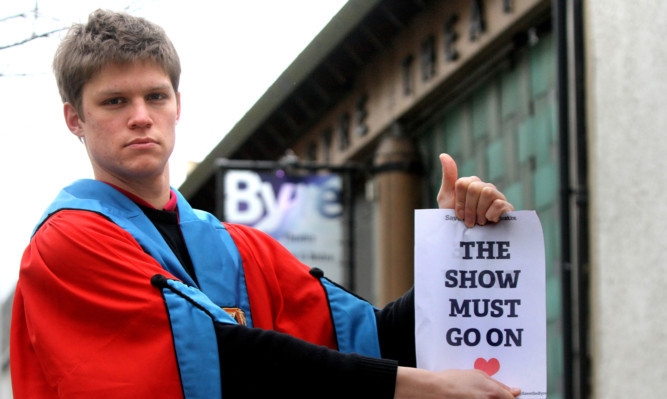Creditors of the Byre Theatre in St Andrews are owed a total of £471,271, according to the liquidators.
However, the assets of the theatre have been estimated to have a re-saleable value of £271,103, leaving a deficit of £200,168.
The update has been given by Graeme Smith of accountants Henderson Loggie, a fortnight after the Byre Theatre of St Andrews Ltd formally went into liquidation.
Mr Smith said that, given these figures, there is an estimated dividend to unsecured creditors of 31 pence in the pound, subject to the realisation of assets, additional creditors arising, and the costs of liquidation.
The board of directors have prepared a Statement of Affairs, which was summarised and presented to the creditors at a meeting in St Andrews, with a report on the background to the winding-up and the company’s financial situation.
Mr Smith said: “The key issues to be taken from the report and the Statement of Affairs are the extreme difficulties faced in the current financial climate as a result of the reduction of grant funding available to the Byre.
“Despite funding being available for one-off projects, which allowed a number of outreach projects to be carried out for the benefit of the community, existing general funding did not cover the overheads of maintaining the Byre Theatre and the staff needed to operate it.
“The company maintained detailed management accounts and identified early in January 2013 that there was a funding deficit looming and insufficient cash available to meet the ongoing overheads.
“The company would have needed an injection of £60,000 to £80,000 to cover the cash needs of the theatre until the proposed transfer of the theatre to Fife Cultural Trust in April 2013.
“Even then, there was doubt about the timing of that transfer due to the state of the company’s finances.
“Further delays would have meant increased liabilities being incurred.
“Attempts were made to secure additional grant funding in the short term. However, insufficient money would have been forthcoming in time to effect a rescue as bills could not have been paid, and the inevitable decisions had to be taken.”
Mr Smith said the valuation of the assets is still under review, and may be amended when the inventory and valuation are finalised.
He said the deficit had arisen primarily because of debt to the Bank of Scotland and employees’ claims.
The bank debt was in the form of a loan which was taken out in 2000 to complete the cost of the building of the new Byre, which opened in the following year.
This was previously guaranteed by, and was still being repaid by, Fife Council and was crystallised against the company in the amount of £143,000.
He added: “Employees’ claims totalling £57,030 bring the figure up to £200,030.
“Had there not been a funding gap in the current financial year and the Byre had been able to continue in operation, these debts may not have fallen on the company and the company may not, technically, have been insolvent at the financial year end.
“This was not possible, and, thus, the company ceased operations.
“The operations of the Byre were such that in the management accounts, and profit and loss forecasts, the Byre was estimated to have ended the year with an approximate £75,000 operating loss in the current financial year.
“This was unsustainable and it is unfortunate that time was against the members of the board who had difficult decisions to take, and had the foresight to stop things getting worse.
“There is no doubt that there are many contributory factors culminating in the closure. However, poor income over recent months appears to have been one of the key issues determining the fate of the theatre.”
Fife Council, who own the Byre building, are optimistic that the theatre could reopen by late summer under the management of the Fife Cultural Trust.
